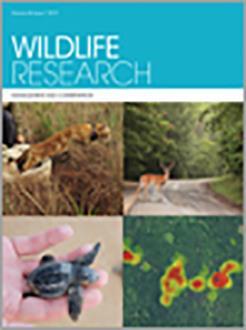Context. Aerial surveys provide valuable information about the population status and distribution of many native and pest vertebrate species. They are vital for evidence-based monitoring, budget planning and setting management targets. Despite aircraft running costs, they remain one of the most cost-effective ways to capture distribution and abundance data over a broad area. In Australia, annual surveys of large macropods are undertaken in several states to inform management, and in some jurisdictions, to help set commercial kangaroo harvest quotas. Improvements in the cost efficiencies of these surveys are continually sought. Aerial thermal imaging techniques are increasingly being tested for wildlife surveys, but to date no studies have directly compared population data derived from thermal imaging with data collected by human observers during the same flight.
Aims. During an aerial survey of western grey kangaroos (Macropus fuliginosus), eastern grey kangaroos (M. giganteus) and red kangaroos (Osphranter rufus) across the state of Victoria, Australia, the objective was to conduct a direct comparison of the effectiveness of thermal camera technology and human observers for estimating kangaroo populations from aerial surveys.
Methods. A thermal camera was mounted alongside an aerial observer on one side of the aircraft for a total of 1360 km of transect lines. All thermal footage was reviewed manually. Population density estimates and distance sampling models were compared with human observer counts.
Key results. Overall, the kangaroo density estimates obtained from the thermal camera data were around 30% higher than estimates derived from aerial observer counts. This difference was greater in wooded habitats. Conversely, human-derived counts were greater in open habitats, possibly due to interference from sunlight and flushing. It was not possible to distinguish between species of macropod in the thermal imagery.
Conclusions. Thermal survey techniques require refining, but the results of the present study suggest that with careful selection of time of day for surveys, more accurate population estimates may be possible than with conventional aerial surveys.
Implications. Conventional aerial surveys may be underestimating animal populations in some habitats. Further studies that directly compare the performance of aerial observers and thermal imaging are required across a range of species and habitats.






